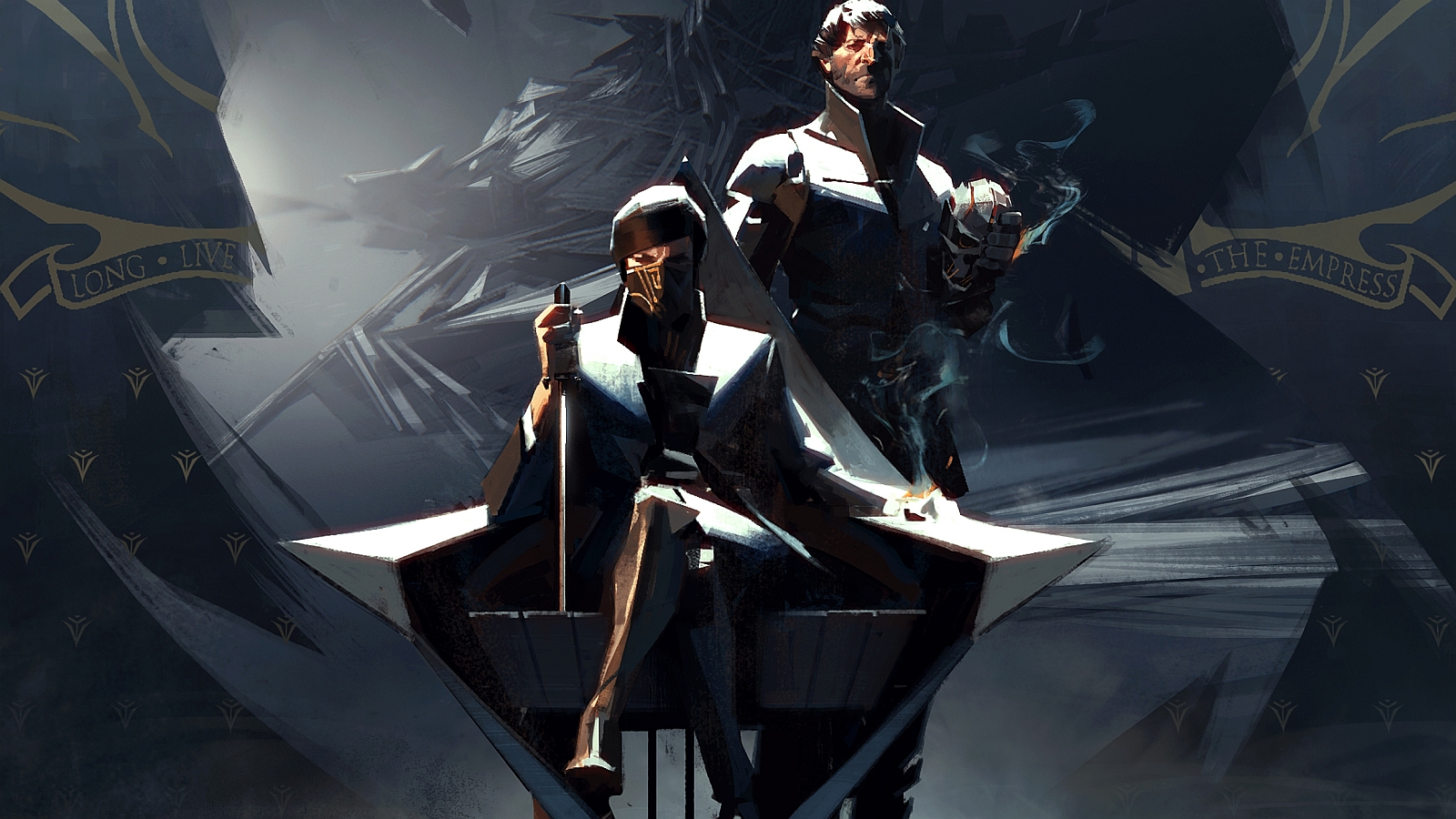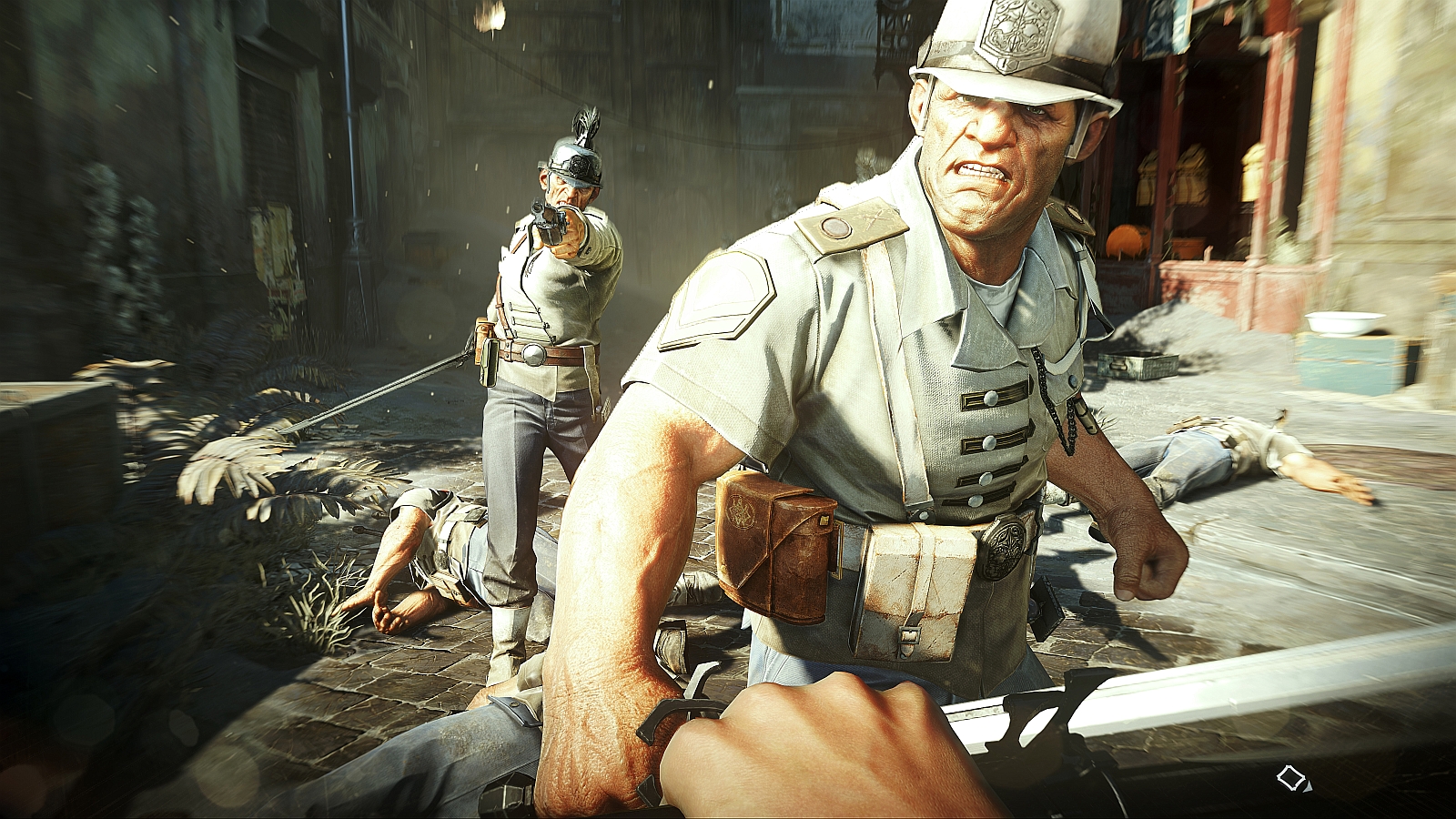Dishonored 2: a deeper, stranger stealth sim
A first look at the sequel Dishonored deserves.

I can't believe that Dishonored is four years old—or at least that it will be when Dishonored 2 is released on November 11th. Arkane's groundbreaking supernatural assassin simulator is flirting with 'best of the decade' status, now, whereas I'm used to thinking of it as the surprise cult hit that quietly swept 2012 out from under the year's bigger games. I spent somewhere north of 150 hours with the original, in part in order to produce this video series and in part because I simply wanted to spend time in the world that Arkane had created, toying with the systems that they'd put in place.
It's easy to be cynical about the sequel cycle, about replicating a formula that works. But Dishonored warrants it: the first game was excellent but it wasn't perfect. It suggested how much more could be done with these mechanics, powers, and places. I felt the same way about Dark Messiah of Might and Magic, as it happens, another cult Arkane game—and one that never saw a follow-up.
Last month, I visited Arkane's studio in Lyon to see what it looks like when you stick a '2' on the end of Dishonored. The game they're making is very much a sequel to the original: don't expect an overhaul. Instead, I'm excited to have been given a sense of what happens when a talented group of people get a second go at a great idea.

Down and out in Dunwall and Karnaca
The story of Dishonored 2 begins in Dunwall and continues a chain of events that were set in motion right at the beginning of that first game. "From minute one the two games felt like dual halves of a circle," says creative director Harvey Smith. "The Corvo story started with the assassination of Jessamine Kaldwin, but there were three people involved in that, right? Jessamine Kaldwin was killed, Corvo was blamed for it, and the daughter of the Empress was standing there for the whole thing. She was more affected by it than anybody. It was really her story to tell, too. The second half of the original story, in my opinion, is to pick up with Emily Kaldwin as an adult, to see who she is."
Emily is Empress herself, now, and has had fifteen years to get used to the idea that somebody might try to assassinate her at any time—and fifteen years of training from her father, Corvo, who's just as aware of that grim possibility as she is. When everything goes to hell in the game's opening act, you'll pick which of these two characters you'll control for the rest of the game.
Corvo and Emily both travel to Karnaca in Serkonos, a sun-soaked southern colony of the Empire, to dismantle the conspiracy brought against the throne. Both characters are now voiced (Emily by Erica Luttrell, Corvo—brilliantly—by Thief's Stephen Russell) and each brings a different perspective to this new city. "Emily is Dunwall," Smith says. "Empress, assassin. Corvo is a foreigner—he's from Serkonos. In Dishonored 2 he's a man going home. He's getting older and deciding 'how many more times can I protect my daughter'.”
“The voice immediately flavours everything, not just in interacting with other people. When they see things in the world they comment."
The biggest gaming news, reviews and hardware deals
Keep up to date with the most important stories and the best deals, as picked by the PC Gamer team.
Corvo and Emily will interact with the same supporting cast—their new base of operations is a ship, the Dreadful Wale, captained by Rosario Dawson's Meagan Foster, and their transit between missions is now handled by the first game's Anton Sokolov. They both come into conflict with the Duke of Serkonos, played by Daredevil's Kingpin, Vincent D'Onofrio, and they'll both assassinate (or non-lethally dispose of) the same targets. The difference between the two comes chiefly down to their respective skillsets.

Strange gifts
Corvo still has his Outsider's Mark (now hidden beneath a glove) and it imparts upon him the same powers: Blink, Bend Time, Possession, Devouring Swarm, Dark Vision, Wind Blast. These have all been tweaked, but not radically overhauled. "There's invisible stuff that made Blink in Dishonored 1 flaky," says lead designer Dinga Bakaba. "I won't go into the details, but it's the very first thing we tried to fix this time. That was the first step for us, because even the legacy features—as we call them—we want them to be better than in the first game, at least. Way better would be better, but better is the minimum."
These traditional powers now have branching upgrades which allow you to customise how they're used. Blink, for example, can be modified with the time-stop upgrade that Daud had in Dishonored's DLC. Possession can be upgraded to allow Corvo to leap directly between hosts or possess giant insects called bloodflies, allowing for unprecedented freedom of movement.
Emily's power set is completely different. Coming up with an alternative to the first game's playstyle-defining Blink was a stiff challenge. Eventually, they settled on a ranged grapple called Far Reach. "People loved Blink," Bakaba says. "Why would we even bother making a different power, remind me? It was a bit crazy, honestly. But there wouldn't be a Far Reach if we didn't find a solution to make it interesting."
Far Reach involves throwing out an invisible tentacle to a point and pulling yourself towards it. It can also be used to snatch pick-ups, and upgraded to allow Emily to hoist guards into the air or fling explosive canisters of whale oil. Watching Bakaba play through a mission, I'm struck by how much more physical it seems. Blink has an ethereal feel: Corvo warps from point to point without seeming to move. Emily, by contrast, flings herself around the city. It's fast and long-ranged but slower than Blink, so guards have a chance to catch a glimpse of you as you sail by. It also conserves momentum (fans of smooth kill montages rejoice) and as a result can be comboed into slides and aerial takedowns.

One of Emily's other powers, Shadow Walk, takes Far Reach's body-horror element further. Emily can't possess animals, so in order to squeeze through tight gaps she can transform into a prowling smoke beast—you saw her do this in last year's E3 trailer. This is is primarily a stealth tool, but also allows for the game's most gruesome executions.
Her other abilities are more otherworldly. Mesmerize creates a rift in reality that confronts bystanders with mind-consuming cosmic horror that they gaze at helplessly. Domino allows the fates of characters to be metaphysically linked to one another: kill one and they all die, choke one and they all choke, push one and they all get pushed, and so on. This is where the potential to combine powers gets really exciting. Everybody who has played an immersive sim has rewired a turret to kill its owners: in Dishonored 2, you can rewire the fabric of reality to amplify your power across multiple targets.
Doppelganger completes the set. This allows Emily to create an autonomous clone of herself that can be used as a distraction or customised to fight on her behalf. This is the only power I didn't see being used—as such, I’m not sure how much fine control you have over your duplicate. You can use it as a pawn in your Domino schemes, however.
On the next page: watching a mission unfold in Dishonored 2, the new chaos system, and more.
Joining in 2011, Chris made his start with PC Gamer turning beautiful trees into magazines, first as a writer and later as deputy editor. Once PCG's reluctant MMO champion , his discovery of Dota 2 in 2012 led him to much darker, stranger places. In 2015, Chris became the editor of PC Gamer Pro, overseeing our online coverage of competitive gaming and esports. He left in 2017, and can be now found making games and recording the Crate & Crowbar podcast.


